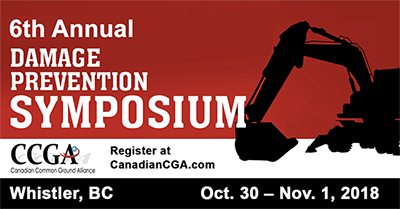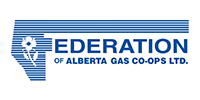 |
|||||||||||||||||||||||
| Archive | Subscribe | Send to a Friend | DigSafeCanada.ca | Dig Safe | |||||||||||||||||||||||
Upcoming Events
Le Symposium sur la prévention des dommages est l’occasion idéale de faire du réseautage avec vos pairs et d'autres industries et de vous renseigner sur les derniers développements, technologiques et tendances en matière de prévention des dommages au Canada. National News
Source: Think BIG Magazine Saskatchewan Common Ground Alliance executive director Sally Cain published an article about DIRT in the Saskatchewan Heavy Construction Association's Think BIG magazine. Source: Centre for Advancement of Trenchless Technologies | SurveyMonkey The Centre for Advancement of Trenchless Technologies (CATT) is conducting a survey to better understand the current state of Sub-Surface Utility Engineering (SUE) practices, barriers and acceptance across Canada. Source: CISION The Honourable François-Philippe Champagne, minister of infrastructure and communities, and Vicki-May Hamm, president of the Federation of Canadian Municipalities (FCM), have announced over $37 million for 27 community infrastructure projects across the country. Association News
Regional Partners
Membership News
by Ophir Wainer | T2 Utility Engineers Professional engineers working on public and private infrastructure projects all too often encounter unexpected costs and delays due to inaccurate or incomplete utility drawings. We do not have accurate and reliable utility records that show the exact location of our underground utility infrastructure, and yet this information is crucial for mitigating risks, increasing efficiency, reducing costs and improving safety on constructions projects. par: Ophir Wainer | T2 services d’ingénierie Les ingénieurs travaillant sur des projets d'infrastructures publiques et privées rencontrent trop souvent des coûts imprévus et retard dus à des dessins inexacts ou incomplets. Nous n’avons pas des données précis et fiables des services publics qui montrent l'emplacement exact de nos infrastructures souterrains, et pourtant, cette information est cruciale pour l’atténuation des risques, accroitre l'efficacité, réduire les coûts et améliorer la sécurité sur les projets de construction. |
|||||||||||||||||||||||
|
|||||||||||||||||||||||


 Joignez-vous à nous à Whistler, en Colombie-Britannique, pour le Symposium sur la prévention des dommages de le CCGA de 2018 et faites partie de la voix collective en matière de prévention des dommages au Canada! Chaque année, le symposium de le CCGA réunit des membres au sein d'associations et d'organismes canadiens qui ont un partage des responsabilités pour trouver des solutions en termes de sécurité publique et de prévention des dommages.
Joignez-vous à nous à Whistler, en Colombie-Britannique, pour le Symposium sur la prévention des dommages de le CCGA de 2018 et faites partie de la voix collective en matière de prévention des dommages au Canada! Chaque année, le symposium de le CCGA réunit des membres au sein d'associations et d'organismes canadiens qui ont un partage des responsabilités pour trouver des solutions en termes de sécurité publique et de prévention des dommages.
 I’m proud to announce the CCGA Damage Prevention Symposium has been approved for accreditation by the Canadian Construction Association National Gold Seal Committee!
I’m proud to announce the CCGA Damage Prevention Symposium has been approved for accreditation by the Canadian Construction Association National Gold Seal Committee!




